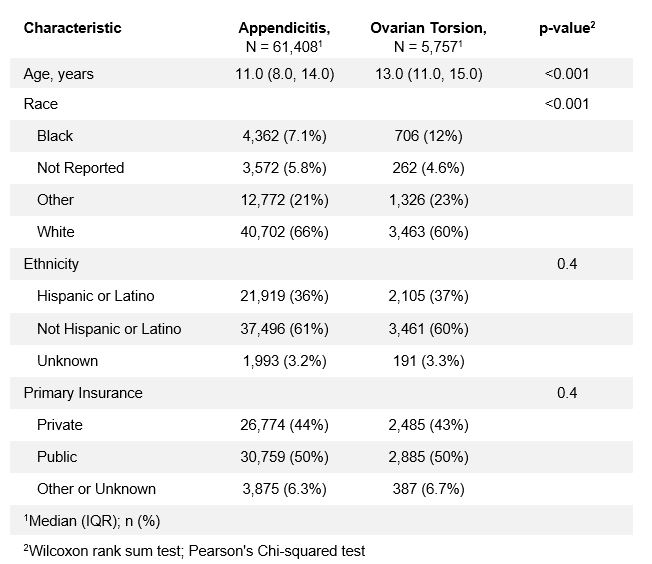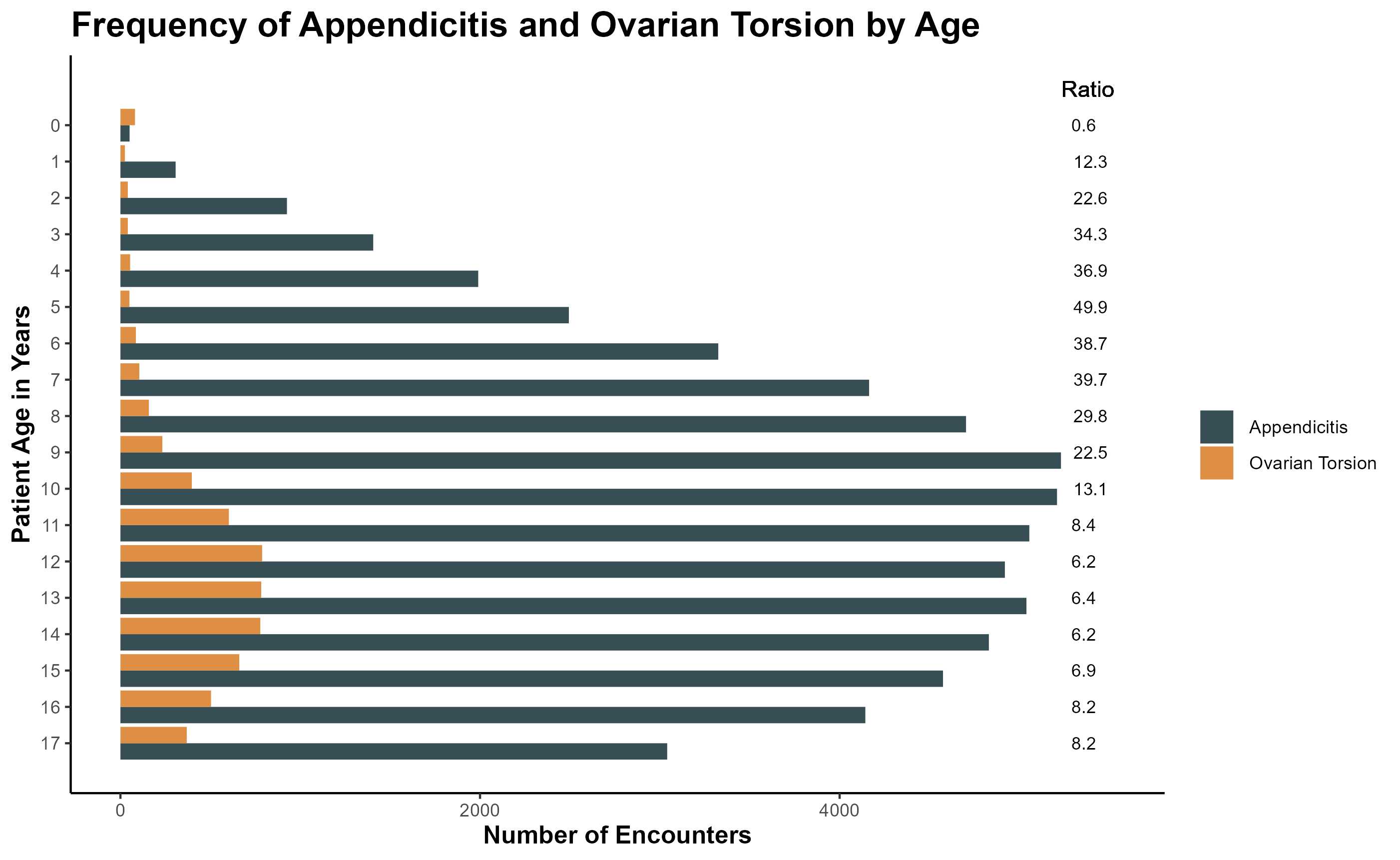Emergency Medicine 14
Session: Emergency Medicine 14
568 - Age-Specific Frequency of Appendicitis and Ovarian Torsion in Pediatric ED Visits: Implications for Imaging
Monday, April 28, 2025
7:00am - 9:15am HST
Publication Number: 568.3867
Patrick S. Walsh, Medical College of Wisconsin, Milwaukee, WI, United States; Amanda S. Dupont, Medical College of Wisconsin, Mequon, WI, United States; Patrick Drayna, Medical College of Wisconsin, Cedarburg, WI, United States; sri Chinta, Medical College of Wisconsin, Milwaukee, WI, United States

Patrick S. Walsh, MD, MS
Assistant Professor
Medical College of Wisconsin
Milwaukee, Wisconsin, United States
Presenting Author(s)
Background: Appendicitis and ovarian or adnexal torsion are primary considerations for females presenting to the emergency department (ED) with acute lower abdominal pain. Ultrasound is the first-line imaging for both conditions and is often done in tandem, but transabdominal female pelvic ultrasound with Doppler requires a full bladder, which can prolong ED length of stay. Understanding the relative frequency of these conditions might help in prioritizing the testing approach.
Objective: To describe the frequency and age distribution of acute appendicitis and ovarian torsion diagnoses in tertiary pediatric EDs.
Design/Methods: This retrospective cross-sectional study included ED visits for females aged 0-17 years with ICD-10 diagnoses of acute appendicitis or ovarian torsion from 2016-2023, using data from 48 hospitals in the Pediatric Health Information System. We compared demographics by diagnosis and calculated the frequency of appendicitis and adnexal torsion as the number of ED encounters with each diagnosis per 1000 all-cause ED visits for females. We also calculated the ratio of appendicitis diagnoses to torsion diagnoses for each age.
Results: In the 8-year study period, there were 61,408 ED encounters for females with a diagnosis of appendicitis and 5,757 with adnexal torsion. Demographics are shown in Table 1. Compared to those with appendicitis, females diagnosed with torsion were older (median age 13 vs. 11 years, p < 0.001), more frequently Black (12% vs. 7%), and less frequently White (60% vs. 66%; p < 0.001) (Table 1). Appendicitis was diagnosed more often overall (5.36 vs 0.51 per 1000 all-cause ED visits for females), but frequency varied with age (Table 2). Appendicitis was considerably more common in all ages > 1 year. In ages 2-9 years, there was a particular discrepancy, with more than 20 appendicitis encounters for each adnexal torsion, peaking at age 5 (ratio: 49.9). For ages 11-17 years, the ratio narrowed to between 6.2-8.4 cases of appendicitis for each torsion (Figure).
Conclusion(s): Both appendicitis and adnexal torsion occurred at all ages, though appendicitis was considerably more common. The largest differences occurred in females under 10 years of age. These findings suggest that in younger females with lower abdominal pain, a high value imaging approach may initially focus on the appendix. Given that transabdominal pelvic ultrasound can significantly extend ED stay due to bladder filling time, it might be reserved for cases with high clinical suspicion for adnexal torsion.
Table 1: Demographics of females diagnosed with appendicitis and ovarian torsion in pediatric ED visits

Table 2: Number of appendicitis or ovarian torsion diagnoses per 1000 all-cause ED visits, by age group.

Figure: Number of ED encounters with appendicitis vs. ovarian torsion, by age
 Ratio was calculated as the number of appendicitis encounters divided by the number of ovarian torsion encounters for each age.
Ratio was calculated as the number of appendicitis encounters divided by the number of ovarian torsion encounters for each age.
